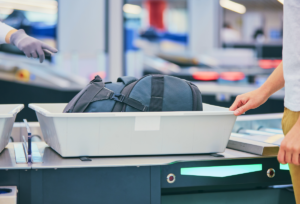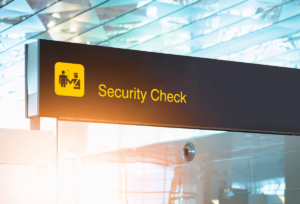A new body scanner is set to be trialled in three US airports after complaints that an earlier version was an ‘invasion of people’s privacy’.
The Transportation Security Administration (TSA) has introduced new software that will only show the outline of the person being scanned and not the revealing pictures of the previous scanners.
The screen being viewed will now only show a generic male or female figure as a chalky outline and staff will only be alerted if a questionable object is detected. Those who are being scanned will also be able to see their image on a screen as they leave the scanner.
The full-body scanners were first introduced in 2007 in a bid to cut terrorism and were designed to detect weapons and hidden explosive devices on passengers before boarding. After much criticism that the pictures were so detailed that they left ‘little to the imagination’, they moved the screening officers into a separate room from the passengers being screened, but this wasn’t enough to stop people complaining.
TSA administrator, John Pistole explained “We believe it (the new software) addresses the privacy issues that have been raised since the AIT (Advanced Imaging Technology) equipment has been deployed. We have high hopes for it, but obviously we want to make sure that we are getting it right in terms of not only lab testing…but also operationally tested in these airports.” He was speaking from the Ronald Reagan Washington International Airport this week where the new software was being demonstrated to staff, with a view to being fully installed here within the next few days.
The software has already been installed at Las Vegas McCarran International Airport, with Hartsfield-Jackson Atlanta International Airport also starting to use it shortly. If the trials are successful the TSA hope to use the software in the 500 full-body scanners already installed in 78 of the US’s major airports as soon as possible.
Mr Pistole also revealed that similar software had been trialled recently in Europe, but it had trouble picking up real threats, he did however confirm that these issues had been addressed before the software was released in the US.
Whilst the new software may spare passenger’s blushes and make them feel at ease over their body issues, it won’t really be of any use if it doesn’t actually do the job it was designed for.
You may also like
airport body scannersairport scannersfull bodyscannersnew softwareTSA



